23
02 Without personal transformation, no global transformation
In this issue
Talking with colours
Build less, build better
The island in the middle of the hills
Seasonality, love and surprises
The record project
Gen Z for play and for real
Riding on the frozen lake
1 23 02
Start—
#genZ #wines #urbanism
#argentina #engineering
#stmoritz #snowpolo
#pierluiginionelli #renzozendralli
#markusberweger #planidea
#qimisola #virginiatschang
#labrasera #pinigroup #recipes
#influencer #tiktok #cantine
#painting #challenges #flavours
#mesolcina #ticino #engadine
#emotions #transformation


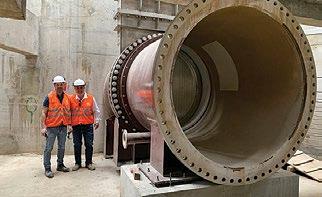


If you have the Spotify application on your smartphone go to “search’ camera icon in the top right and enter the code that is found next to each article.
You can then listen to the playlist inspired by the article. All the playlists can be found at this address: https://spoti.fi/3ofTODK. Enjoy listening... and (enjoy) reading!
Impressum
Publisher Galli Group SA www.galligroup.ch
Graphic concept, (page) layout and text editing visiva.ch
For the photos, we thank: pages 2-3 Censi.photography di Anja Censi pages 6-11 Renzo and Nadia Zendralli pages 12-17 Planidea pages 18-22 Qimisola pages 24-27 Andrea Marcovicchio pages 28-33 Pierluigi Nionelli pages 34-39 Virginia Tschang pages 40-43 Markus Berweger
Print
Salvioni arti grafiche SA
Any use of the contents (total or partial) shall be prohibited, without express consent of the publisher.
November 2023
Index
4
6 Talking with colours 12 Build less, build better 16 The island in the middle of the hills 22 Seasonality, love and surprises 28 The record project 34 Gen Z for play and for real 38 Riding on the frozen lake
Editorial

Grono - October 14th 2023
2
B Atelièr Bistrôt Wine Festival

23 02
To the readers
Editorial
“Without personal transformation no global transformation”
“Without the inner transformation of individuals, the transformation of the world will fail.” This phrase from Nicolas Hulot reminds us not only of personal responsibility in our daily choices (and how much they can have an affect globally, added to those of other billions of human beings) but also that the two must proceed together. They can happen quickly or they can be holistic evolutions; in any case we have to take care of them personally.
That’s why in the Bistrôt edition you are reading, you will find the story of transformational stories.
4

Download your digital copy!
You can download the free digital version (.pdf format) of Bistrôt at bistrot.digital
Since the transformation of land use planning, now that the construction paradigm has changed and building areas in Switzerland have shrunk, Planidea tells us. Qimisola, on the other hand, represents the transformation of an old abandoned estate into a winery with wines consecrated by Winespector. From wine to table, and here in Moesano the concept of menu is transformed giving value to the surprise of seasonality. Lives and territories that are transformed with the story of a mining engineer, traveling from Europe to South America who has found love but is also working to transform one of the most polluted rivers in the world. Instead, every year another engineer transforms a stretch of ice above a lake into a place of sport and celebration for thousands of people. A third engineer, instead, transformed his hidden passion for years, one for the use of colors on canvas, in the way he communicates with the world after a bad turn of fate. Finally, a very young TikToker has been able to pass from the world of dance to a few seconds on the radio and television.
Personal transformations and changes in the surrounding world go hand in hand in the following pages. Get ready for this journey that will take you from Canton Ticino to Argentina, from St. Moritz to Greenland, from the Langhe to the Mesolcina.
Happy reading from the Galli Group! And remember that to transform the world you need to know how to Live in a place. Create. Live your life.
5 23 02
TALKING WITH COLOURS

Why read this article?
To discover how an accident of fate can make us dedicate ourselves to a forgotten lifelong passion and give ourselves the pleasure of the emotions of colour.
#painting #colour #VonMentlen
6

One day you are playing golf. You think that life has given you many satisfactions. You are a respected manager and an important artist and personality of culture. You live with a woman who loves and loves you. You can enjoy the sea breeze at the helm of your boat and travel the world. True, years have passed, yet you still feel in harmony with the world around you. Then, suddenly, you find yourself on the ground, your limbs and tongue don’t respond anymore. You start to lose consciousness. You may think it’s over. Instead, your second life begins. It is more tiring than the first one, you are sitting in a wheelchair, you are struggling to express yourself, you have to do rehabilitation. But you decide not to give up and you find a new way to express yourself. It’s made of shapes and colours. It’s the language of art. This is the story of Renzo Zendralli. We made it to tell from his vivid eyes and the voice of his wife Nadia.
23 02
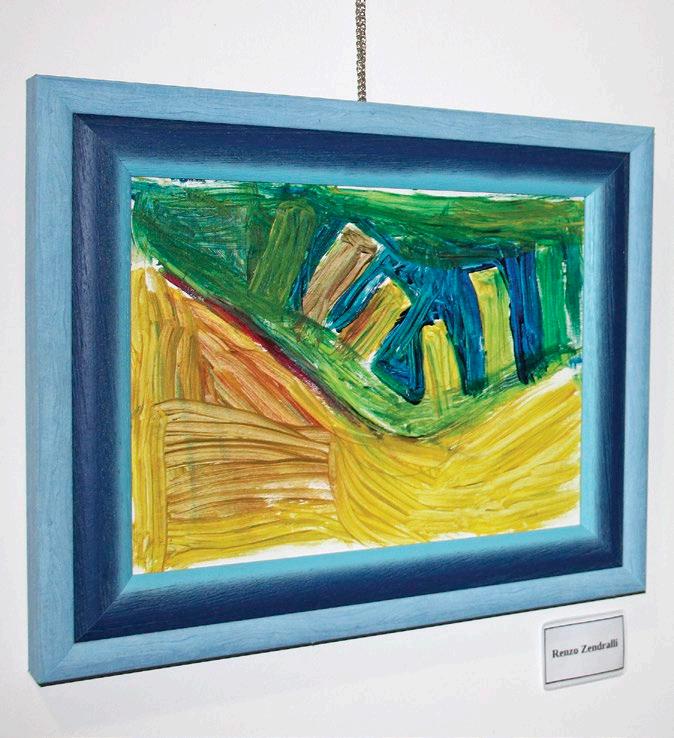
For him it is like a selftherapy, as if through the paintings he presented himself.
We’ll meet you at the Bistrot in Grono. Renzo Zendralli, 78, studied as an engineer and a life spent at the helm of Antonini & Ghidossi SA, general enterprise of Bellinzona, arrives in his wheelchair pushed by his wife Nadia. Now, she is his voice, she is the interpreter of his memories, his gestures and his expressions. A stroke in 2012 caused a right-sided paresis and aphasia and prevents him from speaking as he wishes.
Let’s start with today, from the Von Mentlen Juvenile Education Centre in Bellinzona, where there is the exhibition that hosts a selection of works by Zendralli and some famous artists of his collection. How did the idea come about?
“Renzo - explains his wife Nadiaknows the director of Von Mentlen (Vito Lo Russo) since Vito was a collaborator of a company that worked with Antonini & Ghidossi
SA. Vito then changed professional path but has always held Renzo in high esteem, who also took care of the restructuring of the institute. Therefore, when one day they met, he said that it would be an honor to exhibit his paintings and that it would be a useful opportunity for the young people of the centre, to understand the value of art and open the structure to the public to make it known outside.”
The works are exhibited in some rooms and some corridors on the ground floor of Von Mentlen and the exhibition was curated by the operator in the art sector Vito Calabretta. The exhibition, however, is the result of a larger project.
“Yes, Calabretta is carrying out a research project (“Geographies of expression - Politics of subject, form and body”) to understand and describe the role that art plays in the life of Renzo: first collector, now painter, but it is as if it is the red thread that holds together an existence. For him it is like a self-therapy, as if through the paintings he presented himself, the world that he has inside and that otherwise he is unable to express.”
Back to 2012. How has your life changed?
“After June 7, 2012 - says Mrs Nadia, remembering the date carved indelibly in the existence of the copy - it was like a tsunami.
8
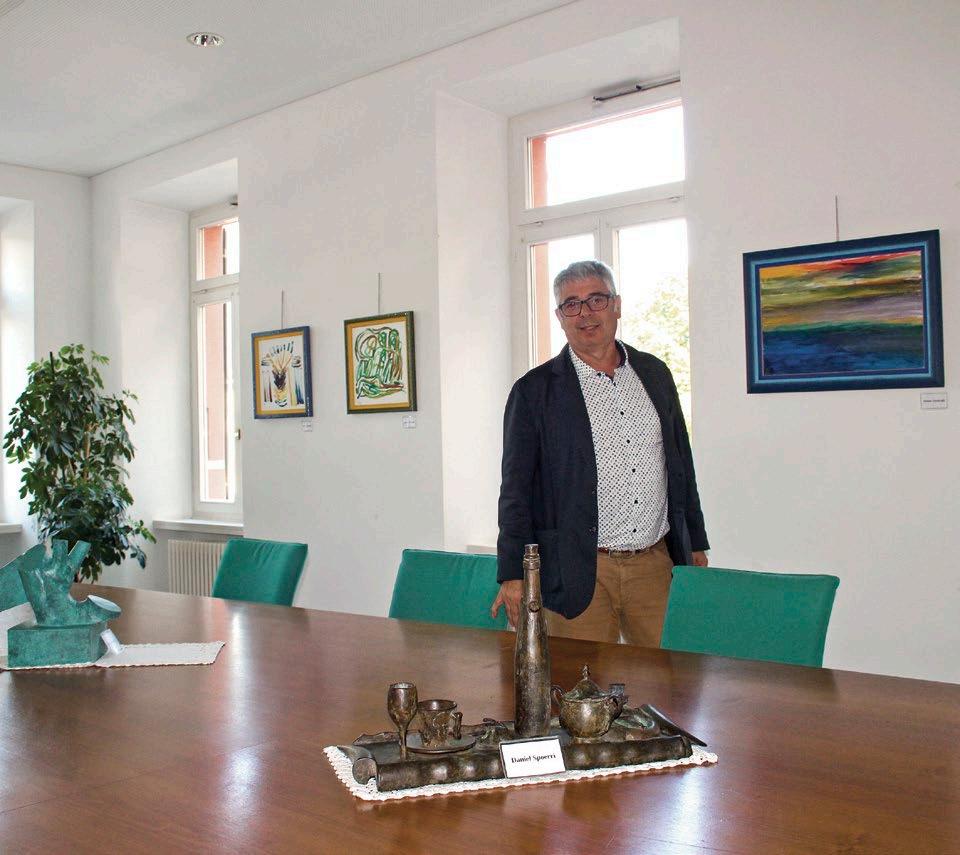
VON MENTLEN FOUNDATION
The CEM welcomes minors of both sexes, between 6 and 18 years who, for personal or family difficulties, need educational support and protection in the short, medium and/or long term, day or residential, outside their family of origin.
The beginning of the activity of Von Mentlen, located in Bellinzona, in Via Athos Gallino 4, dates back to 1911, following the testamentary dispositions of its founder Valeria von Mentlen-Bonzanigo, who devoted all her substances to the creation of a shelter for children.
In the 1990s, the institute underwent a major renovation and modernization with the subdivision of the spaces into two distinct blocks: the housing unit and the building that houses the elementary school “Differentiated school unit” managed directly by DECS. The institute is authorised as an Educational Centre for Minors (CEM).
istvonmentlen.ch
EDUCATIONAL
23 02
CENTRE FOR MINORS

It was like a tsunami. He was 67 years old, spoke five languages, loved to travel and suddenly lost all his points of reference.
He was 67 years old, spoke five languages, loved to travel and suddenly lost all his points of reference. He stayed between life and death, surviving with a hemiplegia on the right side and aphasia that does not allow him to speak correctly. He did rehab and speech therapy, but the neurologist said he had to cultivate his passions. We started traveling again, then one day he told me to go to the Coop Edile. He showed me the department of canvas and paint colours. He bought everything and once home he went into the
garden and started painting on the marble table. He represented tall buildings but they were poised. He communicated the unstable balance in which he felt.”
When was the passion for painting born?
“As a child he dabbled with watercolours and drawings, but then, after studying engineering, art was experienced as an amateur and collector, meeting and attending gallery owners and artists, promoting young talents. In collaboration with Luigi Cavadini, he created a space in Bellinzona dedicated to the selection of young artists who were given the opportunity to exhibit. However, in adulthood he had not painted anymore.”
What are his favourite painters?
“He always had a passion for futurists in the eighties promoted an exhibition on Depero in Bellinzona. Then he collected works by exponents of Nouveau Réalisme: César, Arman, Spoerri, of the Italian post vanguardies: Isgrò, Rotella, Vaccari, of emerging Swiss artists: Beretta, Amstutz, Fiorini, and also works of other names of art: Paolucci, Morlotti, Dobrzanski. But above all many of them, as Spoerri became friends, also for the common acquaintances with Mario Botta.”
What inspires his work?
“In the beginning, his paintings
10
reproduced buildings and prevailed geometric shapes, then he moved on to landscapes. What has never changed is the vitality that its colours express. They are never dark and give joy. From the colours of the Tuscan countryside to the blue of the sea. This also expresses his memories of travel, his passion as a skipper. We were on Etna in a period of eruption and those strong colours were transmitted on to the canvas. Inside, he still has a colourful world and wants to communicate that, even now, he continues to appreciate the life and beauty of art and nature. In these years he has created over two hundred paintings.”
Renzo’s brother Sandro also devoted himself to painting. A family passion?
“Yes, there must be something in the family. They are patricians from Roveredo but were born in Mendrisio, because their father was a stationmaster and travelled around Ticino. For a certain period, they also lived in Faido and it was there that his passion for Inter was born, he used to go on training camps there. His brother Sandro, after a life as an architect, turned to painting, albeit in a more professional manner. Moreover, in Roveredo, a cousin of theirs was famous because he could imitate the great painters. Renzo was an engineer but always had an artistic spirit: a passion for classical art and paintings.”

Keep traveling and visiting museums, is the wheelchair a problem?
“I have to say that the sensitivity to remove architectural barriers has increased everywhere: in Switzerland, Italy, France and England. We were also at the Louvre in Abu Dhabi and there was also the fast lane, the shuttle. At the temples of Agrigento they let us in by car. Yes, we can continue to travel and see the masterpieces even if Renzo is in a wheelchair.”
We take our leave of Mrs Nadia and her husband. We look at him one last time in the eyes, they are eyes that speak, that preserve the colours of the summers as a boy in Faido, the canvases of friends’ painters, trips on the slopes of the volcano and regattas between the waves. Colours ready to turn into paintings on canvas.
Renzo Zendralli
Year of birth: 1945
Profession: Engineer
After studying engineering, for many years he was director of the general enterprise of Bellinzona, Antonini & Ghidossi SA. He was a board member of the insurance company Pax. Philanthropist and art lover, he has been promoter of exhibitions and events to enhance young artistic talents.
23 02
BUILD LESS, BUILD BETTER

12
Why read this article?
To understand the work behind the choices on where to build and discover how the profession of the territory planner has changed over the years.
#Planidea
#urbanism
#planning

The territory is not infinite. In areas with a natural landscape value and a delicate hydrogeological balance, it is therefore essential that an urban and building culture is developed. What does that mean? It means establishing which model of society is desired, which liveability to give to the towns and how to find a balance between territorial, environmental and economic needs.
This is what those involved in spatial planning are called upon to do. It is not just about technical skills, but about knowledge of the subject associated with the ability to listen and synthesis. We talk about it with Sergio Rovelli and Tommaso Piazza di Planidea, a study of land planning and urban planning based in Canobbio.
First of all, how do you become a planner?
Sergio Rovelli: “At the federal level there is the REG, the Foundation of the Swiss Registers of Professionals in the fields of engineering, architecture and the environment. Those who have obtained a higher education in Spatial Planning, proven by adequate professional experience, like me and Tommaso can register with the REG A.”
Tommaso Piazza: “For example, after a basic training in geography, I chose to follow a specific master in Spatial Planning at the University of Geneva, following which I was able to enrol in the REG A and be a full member of the Swiss Federation of Urban Planners.”
Sergio Rovelli: “I, on the other hand, after graduating as a rural engineer, which today is called an environmental engineer, and which combines subjects such as statics and botany, followed and concluded my postgraduate course in Spatial Planning at the ENT Institute of Zurich Polytechnic.”
What other skills does your team have?
Sergio Rovelli: “The multidisciplinary nature of spatial planning requires that engineers, geographers, urban planners, architects, but also graduates in environmental sciences and designers works together.”
When is Planidea born?
Sergio Rovelli: “At the beginning there was the collaboration between the engineers Lepori and Borella. Then in 1991 I, together with the engineer Borella, created Planidea SA. With time, Borella retired and now there is a new phase of updating and growth. Tommaso took over from me in the direction. The aim is to develop the skills needed to keep up with the times and the evolution of urbanism and planning in increasingly complex ways.”
An example of a project of particular interest?
Tommaso Piazza: “Every year we follow numerous variations of the town plan, which can also be very different from each other, in terms of complexity and issues addressed. We also follow some general revision of a town development plan, draft but of less frequent intense activities. However, there are two issues that will become increasingly important. The first concerns the verification of the size of the building areas, which is a predominantly technical issue, but with very complex political, economic and legal implications. The second relates to PACs, the municipal action programmes, also called masterplan or PDCom, municipal director plan. In this case, different disciplines related to urban planning, the environment, the landscape and mobility are combined in a vision that is not only technical but also strategic. It is a necessary work of mediation of the City Hall in order to arrive at a strategic vision of the own territory that allows one to evolve the Town Plans in a picture bearer of a vision of together and politically consolidated. So far, we have set up PACs for about fifteen municipalities, such as: Sorengo, Comano and Monteceneri. With an interdisciplinary group, we also had the opportunity to participate in the parallel study mandate for the preparation of the PDCom of the City of Lugano.”
How has spatial planning changed over the years?
Sergio Rovelli: “We can say that the first generation of regulatory plans between the late 1970s and early 2000s were designed to build without placing too many limits.
23 02
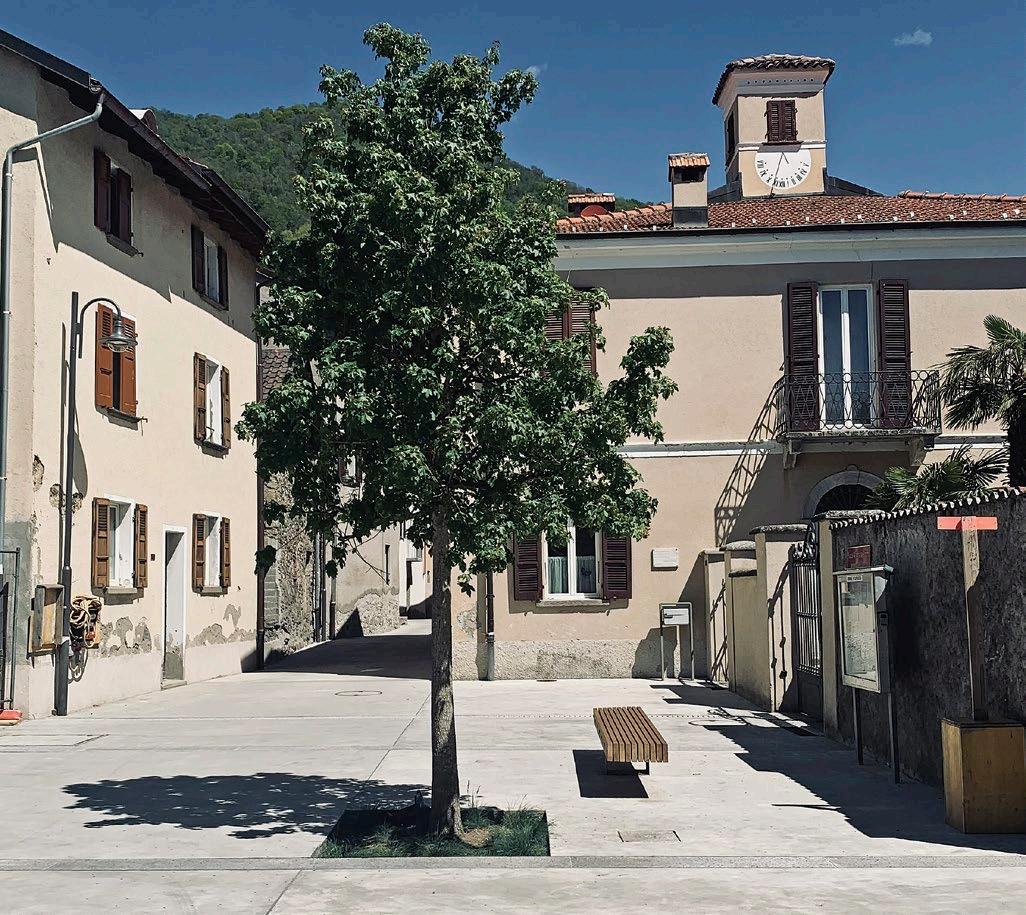
We must therefore act not only technically, but also to ensure that the choices are made politically and democratically.
Now we can say that it has often not been a far-sighted choice, because it has been realized that territory has been wasted and landscape value has been lost. With the vote of 2013, the Swiss people took note of this situation and as a result, today in Ticino the regulatory plans can no longer predict the increase of the building perimeter. Today we are called to bring the quality of construction into the existing fabric and into the still free interstitial areas, which also pass through the creation of community spaces for a better quality of life.”
Has your profession become more difficult?
Sergio Rovelli: “The new approach, established in 2013, implies a growth in the perception of the citizen of what it means to plan the territory. If before every owner could hope to
have a piece of building land and be free to build there, today we must instead tell him what and how he can build and this means creating potential conflict. We must therefore act not only technically, but also to ensure that the choices are made politically and democratically. This is a demanding operation in terms of resources and that goes beyond the strictly urban planning and planning skills.”
Why does everyone have their reasons?
“Yes, there are the interests of property owners and property developers who want to continue building without too many restrictions, and those those who want more environmental protection and promotion of the quality of settlements. We need instruments that agree on the protection of the
14
territory and economy, because without the resources of the second you can not do the first and without the first, the second will soon find itself without arguments.”
The development of mobility has conditioned the urban choices of the past. Now?
Sergio Rovelli: “In the 50s and 60s the mass diffusion of the car was associated with the idea of freedom, now in the big cities they have become a problem for the quality of life of the residents and they try to reverse the trend.”
And on a Ticino level?
Tommaso Piazza: “There are still regional infrastructure projects, such as the expansion of the motorway between Lugano and Mendrisio, the Agno-Bioggio bypass, but at the municipal level, only rarely faced with the need to create new road connections; It is often the result of timely measures to adapt and complete the existing network. In the masterplans there is a desire to manage mobility in a more sustainable way.”
Sergio Rovelli: “We must think that in cities space is limited and we must find a balance: alternative mobility to private motorised mobility must not be an ideological choice but serve to live better.”
Tommaso Piazza: “Mobility is linked, above all, to habit and trying to change, even in a minimal way, people’s habits often finds resistance. For example, the areas that become 30km per hour see the resistance of a fringe of the population that fears losing time,

when in reality, the average journey times remain almost unchanged.”
The international trend is to revitalise the districts of big cities. In Ticino?
Sergio Rovelli: “In our cities we are already quite close to the Parisian model; there are shops and distributed services. The most critical is in the suburbs, where there is a high mortality of shops or there is no longer even a restaurant. We need to understand if we can reverse this trend.”
Tommaso Piazza: “When you move away from the centre, there is not always the critical mass that justifies the economy of a store. We must think of other models: public or public-private, such as consortia or cooperatives. Otherwise, the suburbs will only see residences of people who move then to reach services creating more traffic.”
Not only masterplan lives the planner, what other services do you do?
Sergio Rovelli: “We also deal with the design of public spaces and environmental studies. We follow, for
Sergio Rovelli
Year of birth: 1959
Profession: Planner REG A
After graduating in rural engineering, he attended a course in Spatial Planning at the ORL Institute in Zurich and in 1991 and with engineer Borella founded Planidea SA, of which he is currently president. He lives in Sala Capriasca, is married and has a daughter and a son. He is passionate about mountains and travelling, with an “ecological and anthropological’ approach.
23 02
Tommaso Piazza
Year of birth: 1991
Profession: Planner REG A
After training as a geographer, he obtained a master’s degree in spatial planning in Geneva. After professional experience in French-speaking Switzerland, he returned to live with his wife in Lugano. He holds the position of director at Planidea SA. He enjoys fishing on Ticino’s lakes and streams and playing hockey.
example, the construction sites from the point of view of environmental protection. They are complementary activities that help us to better understand the strategic needs of the territory and how they can be realized.”
Mr Piazza, you studied and worked in planning in French-speaking Switzerland before returning to Ticino. Did you notice any differences?
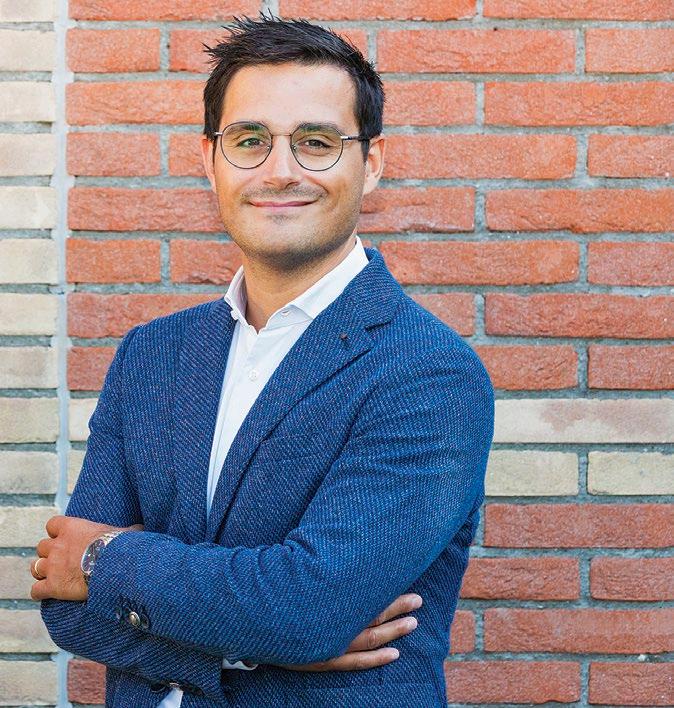
Tommaso Piazza: “There is a fundamental difference that derives from the laws, specific to the individual cantons. The municipalities in Geneva do not have a proper zoning plan, which is managed at cantonal level, while the main task assigned to the municipalities is to draw up their own Municipal Director Plan. But there is above all a difference in sensitivity. In Geneva, it is now an established practice to provide for a phase of involvement of associations, the population and various stakeholders, which bring a so-called “ground experience”. In Ticino, however, there are already similar examples and we are gradually moving in this direction, which reduces the potential conflict but requires more resources and skills not only technical.”
And outside of work, what does a planner do?
Tommaso Piazza: “I love Ticino very much, that’s why I chose to go back, despite having studied and worked in Geneva. Because I believe that knowledge and passion for the territory are fundamental to give greater motivation to our work. My way of living it out of the office is mostly fishing.”
Creeks or lakes?
Tommaso Piazza: “Both of them, I like to fish. It is a great way to experience the territory at a slower pace, going to see places not frequented. And then my other passion is hockey.”
16

And you, Mr Rovelli?
Sergio Rovelli: “I, on the other hand, love to go to the mountains. My passion is not mountaineering. I don’t want to go to the top but to live a more exploratory dimension. As a boy, I was fascinated by Walter Bonatti’s reports and over the years I managed to reach some of the mountains and volcanoes that he had so well described, from Venezuela to Uganda, to Indonesia. So I live the mountain with an ecological and anthropological approach, I try to understand everything that revolves around it and the magic that this unleashes.”
WELCOME TO THE FAMILY!
Planidea SA was founded in 1991 and is a consulting company, based in Canobbio, specialising in spatial planning. In 2023, it became part of the Galli Group. This is a further step in the group’s continuation of the “create, live, live’ chain. The design, construction, consultancy and property management activities are now complemented by spatial planning. From strategy to finalisation, the Galli Group now counts on companies with solid roots and projected towards the challenges of the future.
We must think that in cities space is limited and we must find a balance.
17 23 02

18 THE ISLAND IN THE MIDDLE OF THE HILLS
Why read this article?
To learn about a family that resides in Switzerland, has origins in the Deep North and the Far East, but has found its island of happiness among the vineyards of Asti.
#wine #family #Langhe #Monferrato

“Wherever you are happy, you are at home”, goes a Tibetan proverb. So you can travel the length and breadth of the globe, for pleasure or business, you can live in different countries, but in the end there is a place where you feel happy, where you are at home. Those who find it can count themselves lucky and there are those who have found it in the middle of the hills between Langhe and Monferrato, in an old estate that has been reborn and has begun to see the vats ferment and the bottles of wine age again. A place where a family that has come from afar has breathed new life into ancient vineyards and has done so because, in the words of Emerson: “A house is made with walls and beams; a home is built with love and dreams”. This is the family made up of Qi Zhang, Lars Overvad Asferg and their sons Soren and Mikkel, who in the small town of Bionzo in the Italian province of Asti, have created the Qimisola winery. We asked them to tell us their story.
23 02

You are an international couple, your personal stories range from China to Greenland, what led you to set up a family business in a small town between Langhe and Monferrato?
Qi Zhang
Year of birth: 1976 Profession: Coach
Dutch citizen of Chinese origin, after studies in Economics and international experience as a Business Manager, she specialised in leadership coaching and founded Bridge Enrich, a change management and leadership development consultancy. He combines the ancient Chinese wisdom of iChing with Western change management methodology. She lives in the Lugano area and founded the Qimisola winery in Italy with her husband Lars.
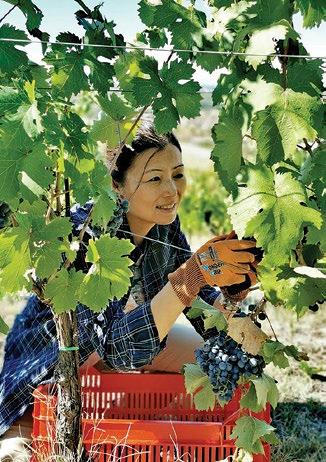
Qi Zhang: “We met in Delft, Holland. We had our first child and started looking for a place where Lars could put his passion and fermentation education to good use. We wanted to create our own estate. Twelve years ago we took a holiday in Piedmont, in Alba. We passed through the Langhe and Monferrato and fell in love with these places, the people. We said: it must be here!”
Was it love at first sight?
Lars Asferg: “Yes, at first we looked in France, also because I speak some Fren ch, I was thinking of something in the Bordeaux region. But then, when we discovered Alba and its surroundings, with wonderful places and friendly people, we forgot about France and chose to invest here. Finding a suitable estate was not easy, however. After looking around, during a diversion, we came across an “ugly duckling” property in the small hamlet of Bionzo”.
Did you start from scratch?
Lars Asferg: “Almost. In 2012 we bought the property. The property had been abandoned for years, but we saw the great potential and with the help of local craftsmen, we were able to unveil the original beauty of the property and create the Qimisola winery of today. We were able to start with the first harvest in 2015, cultivating just one hectare, it is now three hectares. From a small hobby it is becoming a big hobby”.
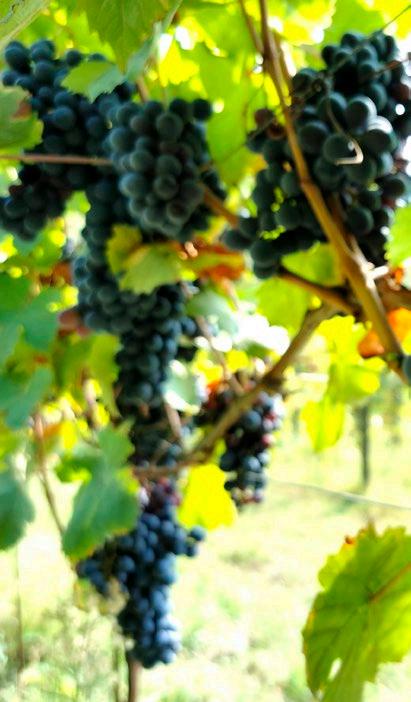
20



Have you moved to live in Bionzo?
Qi Zhang: “We live in the Lugano area, in Canobbio. In Bionzo, which is about two hours away by car, we spend more or less a third of the year. One of the biggest reasons why we love Italy, and this area in particular, is the character of the inhabitants - it is friendly and cooperative. They are almost all small farms. When there is a grape harvest, there is no problem borrowing the tractor and even those who are not from the village like us, and come to invest, are appreciated”.


What do you produce?
Lars Asferg: “Our area is famous for Barbera. We have very old vines of 70-100 years, which yield very concentrated grapes. We produce two types of Barbera d’Asti DOCG Superiore. One is Il Babbo (What the Old Man Does is Always Right), a rich and complex wine, which was awarded the Platinum medal by the Decanter World Wine Awards 2023, the other is called I Fratelli (The Brothers)”.
Qi Zhang: “The other wine we care a lot about is made by the Gamba di Pernice grape, which we called L’Usignolo (The Nightingale). It is an indigenous grape variety that had almost disappeared and which we, together with a few other winegrowers in around Calosso, have replanted. We want to give it a new life. On the other hand, Barbera was also a common table wine until a few decades ago, and then it evolved into a refined, structured wine.
Forecast for the 2023 harvest?
Lars Asferg: “It was very hot and there was very little rain, the southwest exposure of the Barbera vineyards suffered, the berries small and quantity much less. The northfacing Pinot Noir vineyard, on the other hand, suffered less from the weather conditions”.
Il Babbo is a rich and complex wine, which was awarded the Platinum medal by the Decanter World Wine Awards 2023.
21 23 02
Who are your customers?
Qi Zhang: “Our production is up to ten thousand bottles a year, of which 4,000 are Barbera. We sell to small distributors or directly to wine shops and restaurants. From Northern Europe - Denmark, Holland, Belgium - to Italy and also in China and Hong Kong, thanks to our international network”.
What do you look for and want to offer in a glass of wine?
Lars Asferg: “I love complex wines, like Babbo but also a fresh and fruity Pinot noir classic method sparkling wine. It depends on the context and the moment”
Qi Zhang: “I really like the Gamba di pernice, as I think it has not yet released its full potential and can evolve. In general, I think a wine should communicate its spirit, which is why we named each label after an Andersen fairy tale based on the character of the wine. Wine is not only a technical matter, it is also the tale of a story, of a territory, of a personality”.
What do you foresee for the future of Qimisola?
Lars Asferg: “From this year we can put the EU designation organic wine on the bottles. We chose this path because we think it is very important to approach wine growing with respect for the soil. In the next few years we will also have bottle production of Nebbiolo. They will always be small productions from our vineyards”.
The island is about to become an archipelago of wines that tell the story of love for a territory that has been able to give substance to a dream.


Lars Asferg
Year of birth: 1964
Profession:
Business executive
Of Danish origin, he grew up in Greenland, and after studying chemical engineering (biotechnology) he lived in different parts of the world for work, in particular in Asia, specialising in the market for enzyme and yeast products. Since 2015, he has been President and GM of the BioIngredients division of the Canadian multinational Lallemand and operates in Switzerland from the Zug office. He lives in the Lugano area and, with his wife Qi, founded the wine company Qimisola in Italy.
I think a wine should communicate its spirit, which is why we named each label after an Andersen fairy tale.
22
HISTORY OF QIMISOLA
The name Qimisola is made up of the two initial letters of the parents’ and children’s names (Qi, Mikkel, Soren and Lars) arranged to form a word that sounds similar to ‘Qui è la mia isola’ in Italian (although the correct pronunciation of Qi sounds Ci in Italian), because for the founders Zhang and Asferg it is their island of peace and serenity.
The winery is located in Bionzo, a hamlet of Costigliole d’Asti, in South Piedmont. The estate historically belonged to the Poggio family, who lived there and cultivated the fields until the mid-20th century. It was later bought by a Genoese wine merchant, Squillari who combined the importation of port and the foreign liqueurs he sold in Italy with the production and sale of the wine he began to make in Bionzo. When the owner decided to retire in the 1980s, his neighbours bought a few hectares of the land that bordered his own, but the house and most of the vines fell into a state of neglect.
A final curiosity, Qimisola’s logo features the Chinese zodiac symbols of the birth years of the couple’s children (the snake and the rabbit, the duality of Yin and Yang, in reference to Qi’s Chinese origins, and the red and white colours of the flags of Greenland and Denmark in which Lars’ roots lie. Most importantly, it conveys the aspiration of the wine - may a good glass of wine make wonderful connections and transform any relationship (even between a snake and a rabbit).
qimisola.com
THE AWARD
In June 2023, the wine “Il Babbo”, Barbera d’Asti DOCG Superiore produced by Qimisola, was awarded Platinum Medal 97/100 by the Decanter World Wine Awards. This is the world’s largest and most influential wine competition, which this year featured 18,250 wines from 57 countries. The jury consisted of 236 wine experts, including 53 Masters of Wine and 16 Master Sommeliers, from 30 countries. ‘Il Babbo’ was among the 28 Italian wines awarded Platinum medals, of which only five were from Piedmont.
23 02
Why read this article?
To discover how to share love and cooking, to listen to the voice of a couple who have chosen to be inspired by a philosophy based on seasonality and surprise menus.

Seasonality, love and surprises
24
#Mesolcina #flavours #cooking
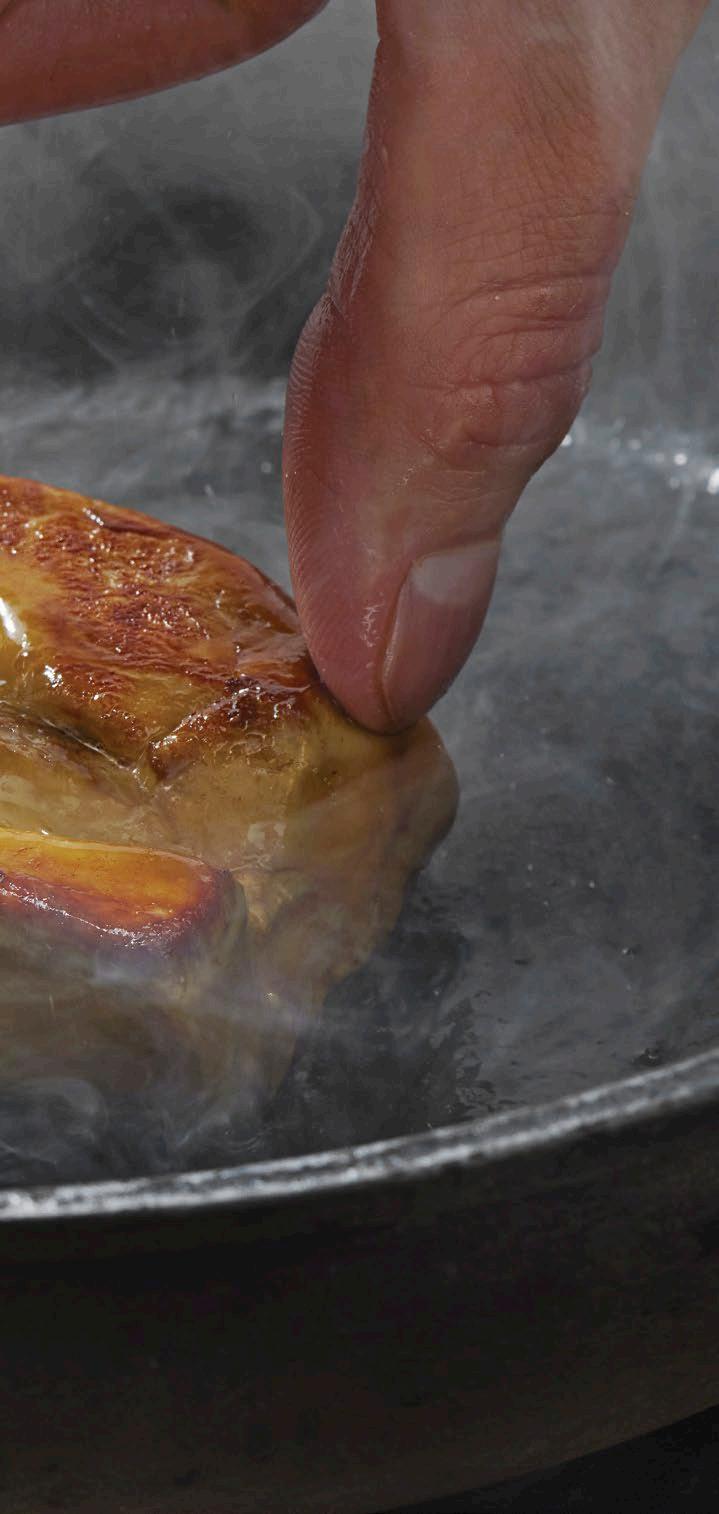

Luigi Maiolo
Year of birth: 1975
Profession: restaurateur
After hotel school in Calabria, he moved to Switzerland in the 1990s, where he met his future wife, Paola. Together they ran a restaurant in Gambarogno (TI) from 2001 to 2007 and then opened Brasera in San Vittore (GR) in 2008. They have a daughter aged 20 and a son aged 15.
Paola Maiolo
Year of birth: 1979
Profession: restaurateur
Born and raised in Marolta, in the Blenio Valley (TI), in the 1990s after obtaining her diploma as a cook she met her future husband Luigi on Lake Lugano, whom she married in 2001. Together they ran a restaurant in Gambarogno (TI) from 2001 to 2007 and then opened Brasera in San Vittore (GR) in 2008. They have a daughter aged 20 and a son aged 15.
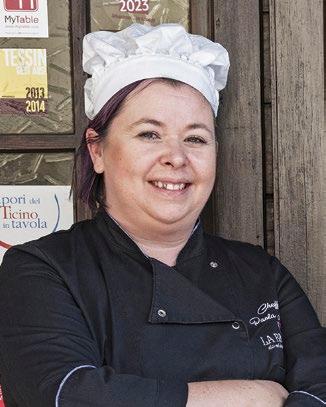
23 02
For 25 years, they have shared not only family life but also working life. Their profession is that of restaurateurs, which means every day they devote several hours between kitchen and dining room to satisfy customers. Yet the routine does not seem to stress them, on the contrary; they have chosen, as their philosophy, to always bring spring to the table, to be understood as paying attention to the seasonality of the recipes but also to the freshness of a surprise menu that follows the best, week after week, offered by the market.
Their “nest” is at the entrance of the Mesolcina Valley, in San Vittore, the first town that meets with the Graubünden flag along the canton towards San Bernardino. They are Paola and Luigi Maiolo and they told us their story of love and cooking.
Can we bet you two met in the kitchen?
Luigi: “Yes, we both worked in a hotel on Lake Lugano, in Bissone.”
Paola: “It was towards the end of the nineties. I was an apprentice cook. He was serving in the Dining room.”
How was born the passion for catering?
Paola: “I was born and raised in the Blenio Valley and I remember with sympathy my first rice salad: I was 8 years old, I barely got to the sink. Since then, it has been a love for the kitchen, until obtaining the diploma of cooking.”
Luigi: “I attended the hotel school in my homeland, in Calabria. After graduation, 30 years ago, I moved to Switzerland and devoted myself mainly to the hall. Then I met Paola, we got married in 2001 and we opened our own restaurant in Gambarogno which became a multipurpose unit between kitchen and dining room.”
When was the Brasera in San Vittore born?
Paola: “We opened it in 2008 and immediately had a good response.”
How have customers changed in these 15 years?
Luigi: “We work with a very loyal clientele. Then after Covid came, the desire to go out for business lunches reduced significantly. Before there were those who came 3 times a week, now only once a week.”
What is your philosophy in the kitchen?
Paola: “Our motto is ‘It’s always spring at our place’, not only because when it’s season, we refine the dishes with which flower or petal, but above all because we start from the question: What does the market offer us today? Only in this way can we respect the seasonality of the products and their freshness.”
It also means a surprise menu...
Luigi: “Of course we have our signature dishes: from September to December la sella di capriolo (the
26
saddle of roe deer) and fish specialties from January to August. However, every day for lunch and dinner we offer three menu variations: meat, fish and vegetarian, with recipes that rotate day by day and week by week.”
Paola: “In this way we offer quality and variety to our customers.”
Luigi: “They trust us blindly, even for wines, they usually choose the tasting path we recommend.”
Do you have a good cellar?
Luigi: “About 300 labels. We try to push especially the local Merlots, but we have wines from important Italian, French and other wineries.”
Do you use local products?
Paola: “Wherever it is possible, as for Mesolcinese cold cuts and goat cheese produced by a lady in a small dairy around Chiasso. As for game, except deer, in our areas there is not enough.”
Luigi: “For example, le selle di capriolo (the roe deer saddles), are among the most appreciated dishes that we serve with 11 side dishes, all come from France or Austria. They are of excellent quality and are delivered twice a week. We also make 40 a day.”
For 22 years you have been living and working together, a great challenge...
Luigi: “One which leads to white hair! Apart from the jokes, it is certainly challenging, because the discussions, that you have at work, even trivial ones, you risk taking them home and vice versa.”
Paolo: “Yes, it’s true, it s not always easy, but it’s also true that we understand each other quickly.”
You have two children; will they follow in your footsteps?
Luigi: “The oldest is 20 and goes to university, the youngest is 15. I think they will both do something else.”
Are young people not attracted by your profession?
Paola: “Certainly it is very demanding and requires sacrifice and professionalism.”
Luigi: “Nowadays it is more and more difficult to find people who can do great room service, yet it is what makes the difference in many cases. We are lucky that we have wonderful boys and girls who make our service a fine flagship.”

We respect the seasonality of the products and their freshness.
THE RECIPE
Foie gras escalopes with caramelized apples
A quick recipe for a gourmet appetizer?
At the Brasera, they recommend taking a fresh loaf of foie gras, heating the blade of a knife and cutting slices a couple of centimetres thick.
Put a couple of minutes on each side to cook in a hot nonstick pan, salt and pepper in abundance.
The escalopes are placed on a slice of toasted brioche bread, it goes well with caramelized apples and a grape or strawberry sauce depending on the season. It is enhanced with a glass of Sauternes.
23 02
Why read this article?
To travel in South America, from the Andes to the Rio de la Plata and discover a clean-up project of one of the most polluted river basins in the world.

#LatinAmerica #restoration #engineering #PiniGroup
THE RECORD PROJECT
28

If you search the internet for definitions of the Riachuelo, you will find a river that flows through famous neighbourhoods in Buenos Aires before bringing its waters to the Rio de La Plata. You will also discover that swimming in its waters is like swimming in a thick, black yogurt. It is, in fact, one of the most polluted rivers on Earth. For centuries, its water has been the collector of industrial waste, ending up with arsenic, chromium, copper, zinc and other toxic waste. It also collects the waste water from the homes of the homeless that have sprung up on its banks. It is in no uncertain terms: a gigantic sewer. This has always been the case, since colonial times, when butchers were already dumping offal in it. However, next year should mark the beginning of a turnaround. A gigantic clean-up project, funded by the World Bank and the Argentine government, will put an end to one of the largest openair discharges in the world, capable of endangering the health of millions of people and the entire ecosystem on which two of the main capitals of South America: Buenos Aires and Montevideo. Directing the work is a Pini Group engineer, Pierluigi Nionelli. We interviewed him.
29 23 02
Pierluigi Nionelli
Year of birth: 1979
Profession: Mining Engineer
He grew up in the Piemontese Val di Susa and graduated in 2004 in Mining Engineering at the Politecnico di Torino in 2004. For the engineering company Geodata deals with underground designs in several countries in Asia, Africa, Europe and America. Since 2008 he has been working on projects in South America (Ecuador, Peru, Colombia). He currently lives and works in Argentina as an Executive Business Manager of Pini for the Latin American area. Married, he has two children aged 9 and 6.
Growing up in the Susa Valley in Piedmont, he worked in Ecuador and other South American countries for years. From the Alps to the Andes, how did it happen?
“Towards the end of my studies in Mining Engineering at Politecnico di Torino, I started working in Geodata for the construction of the old Frejus railway tunnel. Then I did a master’s degree in mechanized excavation in 2006-2007 and then I started working for Geodata in China, Brazil, Africa and Spain. I followed the design of the different phases of mainly underground construction sites. In

2008 we won a race in Ecuador for hydroelectric design, it was a new field and in 2009 I started travelling up and down from Ecuador.”
Then the return trips were made less frequently?
“Yes, the project continued until 2013, but in the meantime I met my wife. She is also an engineer, but civil, she graduated in Italy, in Milan, but she is a citizen of Ecuador.”
You stayed in South America?
“I followed the Lima metro project in Peru for a year, our first son was born and we returned to Quito, me as managing director of the Geodata branch that dealt with Ecuador, Peru and Colombia.”
When did you arrive in Argentina?
“In 2018, Geodata became Chinese property and I moved to Buenos Aires to follow the whole of Latin America (LATAM, ed.) and in particular the project for the rehabilitation of the Riachuelo basin, of which I am the works director. I am continuing with this commitment, along with that of Business Executive LATAM, now that Geodata has been taken over by Pini Group. Among the different projects we are following are the new metro line in Santiago in Chile and the design of railway works in Peru. While in Brazil we operate in São Paulo and we also follow a project related to nuclear.”
30
How did your passion for mining engineering come about?
“I remember in elementary school, when I was 8 years old, the father of one of our classmates came to class to talk about his work: he was a mining engineer. His stories fascinated me and I already had a passion for everything that was digging and underground and I started to think that when I grew up I would do that. Therefore, at the time of university, the choice was between mining engineering and biotechnology, another interest of mine at the time.”
You toured around South America a lot, what difference did you notice between the Andean culture and that of the Atlantic area?
“One of the characteristics of my job is to travel a lot, and I really love to see how people’s lives change, their daily habits in different countries. I can say that between the serrano, that is, the Andean, and the porteño, those who live in coastal cities like Buenos Aires, there are obviously differences. However, they are the same as there may be in Europe between those who live in the Alps and those who live in port cities. In general, the Andeans are a little more closed, wary, but when you visit them you find beautiful, hard-working people. The porteño are more sympathetic, more sociable and open, but sometimes less reliable work-wise. I like both, and especially among all cities I love Buenos Aires for its European flavour, even its current decadence can have a certain charm.”
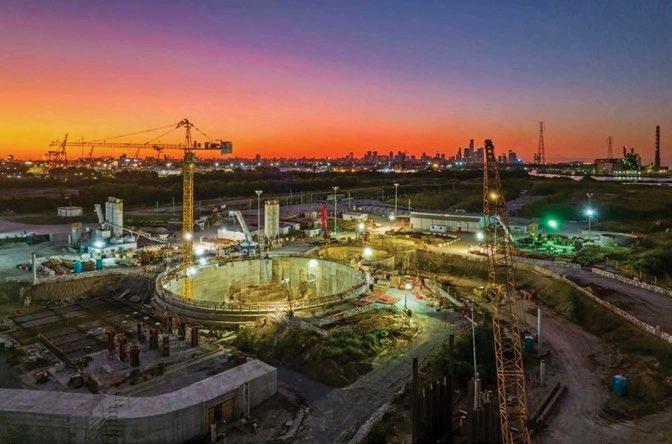
Argentina and Buenos Aires have been in a particularly serious economic crisis for some time. As you can see from there.
“Argentina is a country with great resources that, regardless of the political side in power, do not want to try to overcome economic and financial weakness. The result is a hyperinflation that last year was 100% (and that in the summer reached a peak of 115.6%). Go out and buy the milk that cost 1 yesterday and you do not know if you will pay 1.5 or if they will sell it to you because they do not know what price to do. It is a situation that weighs heavily on the middle and working class.”
Is Buenos Aires a dangerous city?
“No more than other big cities. It depends on the areas. I live in Puerto Madero with my family and the quality of life is good.”
What about the infrastructure?
“There are many construction sites underway, but funding depends substantially on multilateral bodies.”
You are leading a major clean-up project funded by the World Bank in Buenos Aires. What is it?
“I call it the record project because there are several records. It is the first time that a particular type of excavating machine is used in South America. We dug deepest well in Buenos Aires: 60 meters. We built about 40 kilometres of tunnels and a hundred wells with diameters between 3 and 60 meters.
When I was 8 years old, I decided that when I grew up I would be a mining engineer.
31 23 02
We built a tunnel under the Rio de la Plata which is 12km long.”
What is the reason for this large project?
“Essentially, since its foundation, Buenos Aires has dumped industrial waste and illegal waste into the Riachuelo, which has become one of the 10 most polluted areas in the world. In the early 2000s, a civil suit forced the city to intervene. The World Bank has intervened to finance the project, which began in 2017 and plans to intercept the existing sewage drains, some dating back over a century ago, and bring them with a single underground pipeline to a sewage treatment plant. From the latter, the pre-treated liquid is discharged at a distance from the coast into the Rio de la Plata, thus exploiting the dilution effect.”
Where are the jobs?
“The third lot, the treatment plant, is coming to an end. The underground works have been completed and are expected to be put into operation in 2024. It is an intervention that will benefit an area of about 5 million people because the drinking water of Buenos Aires is taken from the Rio de la Plata.”
“Rio de la Plata in Spanish means ‘silver river’. In recent centuries we can say that it has also become of copper, zinc, chrome and other metals and pollutants poured into its waters by discharging industrial sewage in its tributary, the Riachuelo. Thanks to the intervention directed by the engineer Nionelli, it is hoped that from next year, it will return to shine with silvery and metallic reflections, only metaphorically.”
It is an intervention that will benefit an area of about 5 million people.
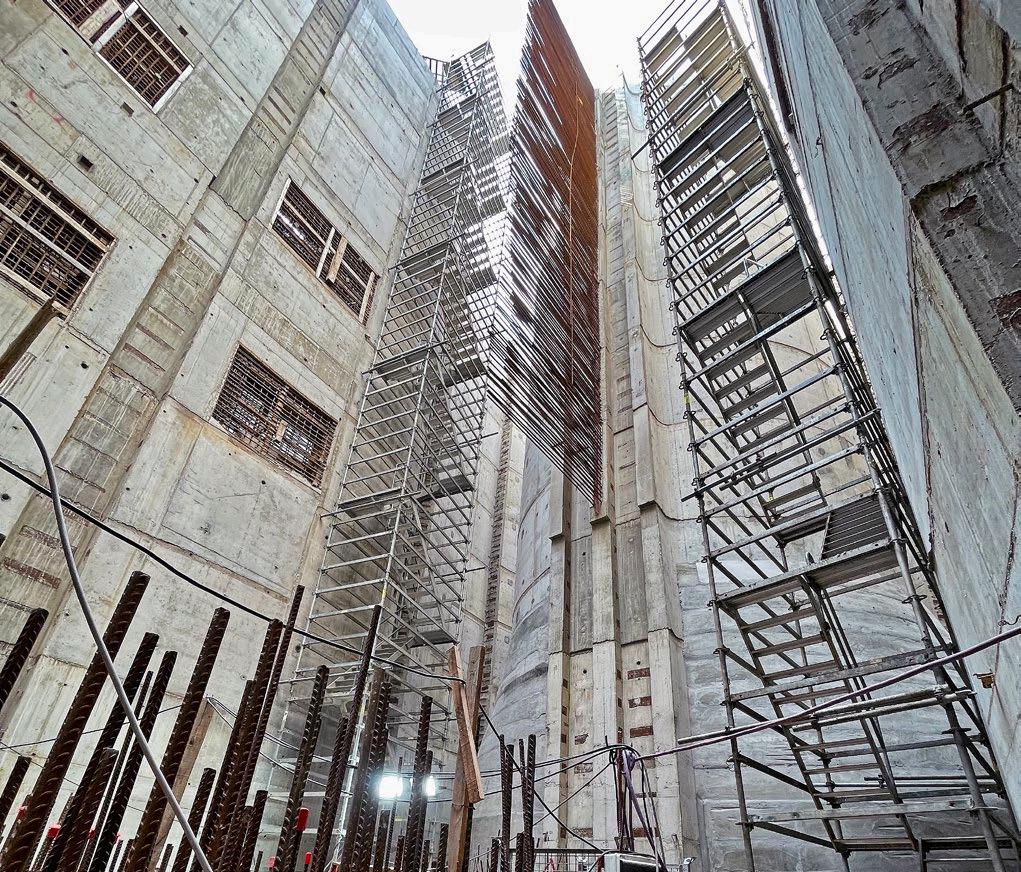
32
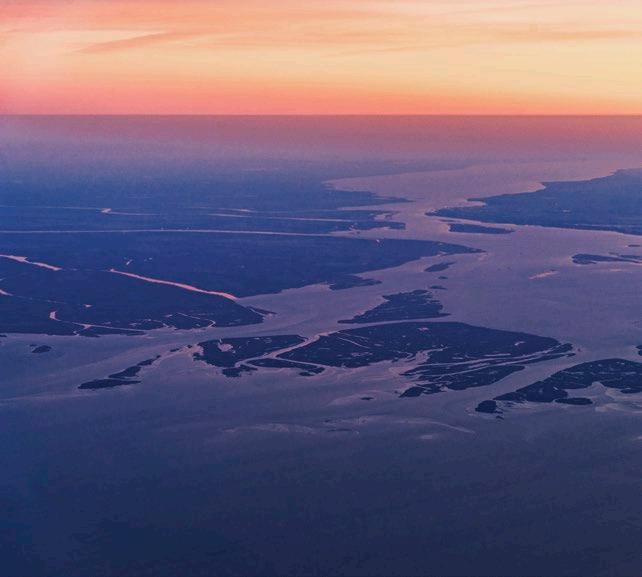
THE RIVER WITH TWO NAMES
The Río Matanza rises west of General Las Heras, in the province of Buenos Aires, arrives at the bridge La Noria, along the Avenida General Paz, changes its name and, up to the mouth, is called Riachuelo. It flows into the Rio de la Plata between the Barrio Porteño de La Boca and the port area of Dock Sud. The river and the surrounding area, known as Cuenca Matanza-Riachuelo or Matanza-Riachuelo basin, is home to 23% of the residents of the Buenos Aires metropolitan area and 9.16% of the country’s total population.
SEA OR RIVER?
The Río de la Plata is the estuary formed by the Uruguay River and the Paranà River. The point where the two rivers meet is about 48 km wide, increasing to about 220 km where it flows into the Atlantic Ocean after about 290 km. Although it appears on maps as an Atlantic Gulf, due to the flow of fresh water from the two main rivers and their tributaries, which prevents the tidal backflow of salt water, the Rio de la Plata is today unanimously considered a river.
23 02
Why read this article?
To have a particular and internal look on the world of Generation Z and understand how they see the world of adults, work and new media.
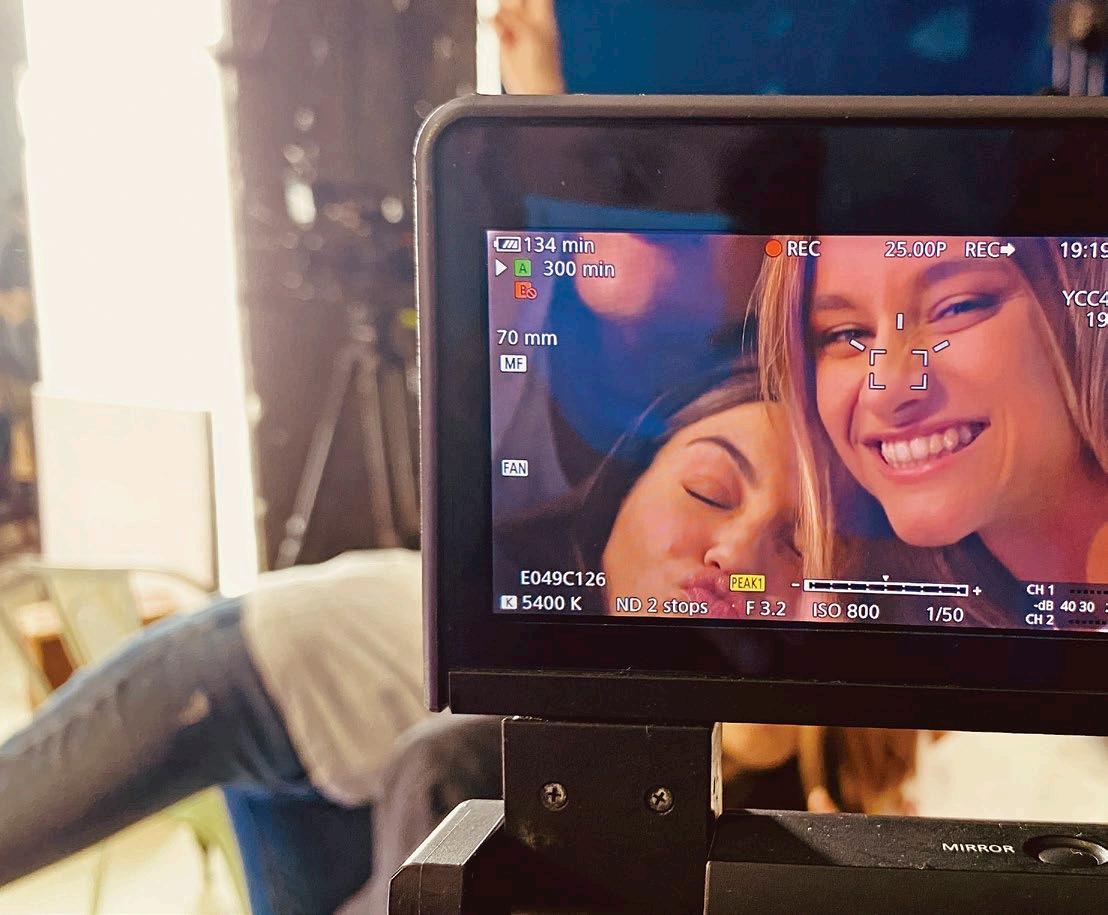
#TikTok #radio #influencer #GenZ
GEN Z FOR PLAY AND FOR REAL
34

Virginia Tschang
Year of birth: 2002
Profession: radio and television speaker, influencer
Virginia Tschang grew up in Milan. After creating a channel on Youtube as a teenager, she became successful on Instagram before and TikTok later with the nickname VirgiTsch (to be pronounced Virghic). She became a radio speaker for RDS Next, Radio Zeta and RTL 102.5. On television for Nickelodeon, she voiced the Kids Choice Award 2023 and special dedication to Spongebob, La vera casa dei Loud and Dangerforce. She worked in Rai and Sky programs.

Generation Z refers to those born between the late 1990s and the first ten years of our century. They are the teenagers and twenty-somethings of today. They often are digital natives who have been able to interpret and create new media languages. It is the TikTok generation, the one that loves memes and funny stories, but is also careful not to be teased by the adult world. A generation in which the social world can become a job, the influencer. We talked about it with Virginia Tschang, who is 21 years old, but who was already on TikTok before it was called that and who was able to make herself known on radio and TV. Here’s what he thinks of social media and Gen Z.
35 23 02
Shall we call each other by name?
“Sure!”
So let’s start with the name. On social media they have known you as VirgiTsch, now you present yourself as Virginia Tschang. What should we call you?
“My surname is Tschang because my mother has Chinese origins. Her grandfather came to Italy in the thirties and married an Italian. It was the first marriage between a Chinese and an Italian in Milan. On social media my nickname has always been VirgiTsch, to pronounce Virghic, but I’m changing it by putting the full name. On Instagram I now introduce myself as Virginia Tschang.”
Born and raised in Milan?
“Raised yes, born no. I was born in the hospital of Cittiglio, a small village near Lake Maggiore, because my family has a farm in the area and at that time my mother was there.”
Studies?
“After high school I enrolled in Science and Technology for Cinema, Art and Entertainment at the Universitas Mercatorum in Rome. I take online courses. I am in my third year.”
On social media you arrived at a young age...
“I was 14 years old and a friend of mine insisted that I join Musical.ly. It was a social network where they posted videos pretending to sing famous songs.”

Some kind of voiceless karaoke?
“Yes, kind of, but you could recreate the choreography in a nice way. You put on the clip with the original music and then there was you doing it again. I remember doing versions of the videos with Mercury with the broom handle instead of the microphone rod and repeating all the moves. I even copied videos of songs, including shots.”
It was a fun game to you.
“Yes, but then in the 2018 Musical.ly became TikTok. The videos were no longer just music, it began to become a social platform in which to tell your stories, much more talked about. The first period I was surprised by it, then I began to tell about myself, my days, I am not a thematic influencer. I liked it!”
Followers aren’t numbers, but numbers matter. How many followers do you have?
“On TikTok I have about 670,000, on YouTube about 50,000 and on Instagram over 90,000.”
And you got noticed...
“Proposals came from some agencies to sign me to sponsor products on social media. With my mum, we started reading everything, then in the end I signed with the agency that still follows me and that started proposing me not only simple sponsorships but also projects.
That’s how participation in radio and TV programmes came about. They liked the way I was relaxed in front of microphone and camera.”
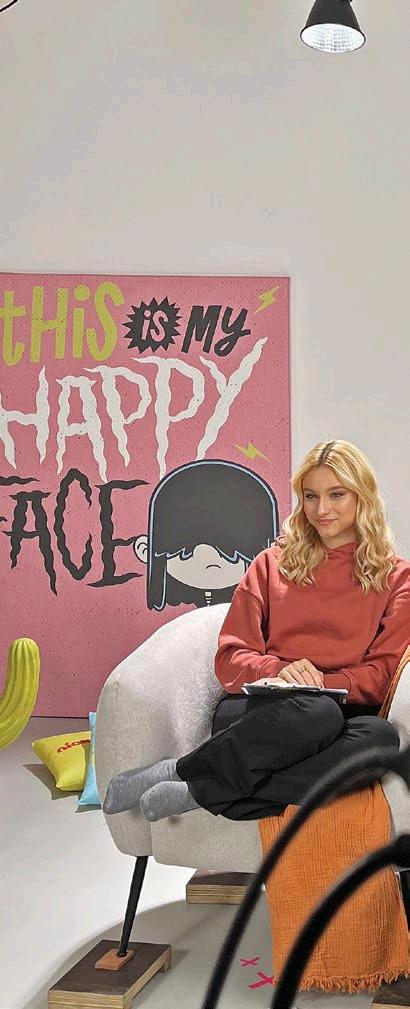
36
I
remember doing versions of the videos with Mercury with the broom handle instead of the microphone rod!
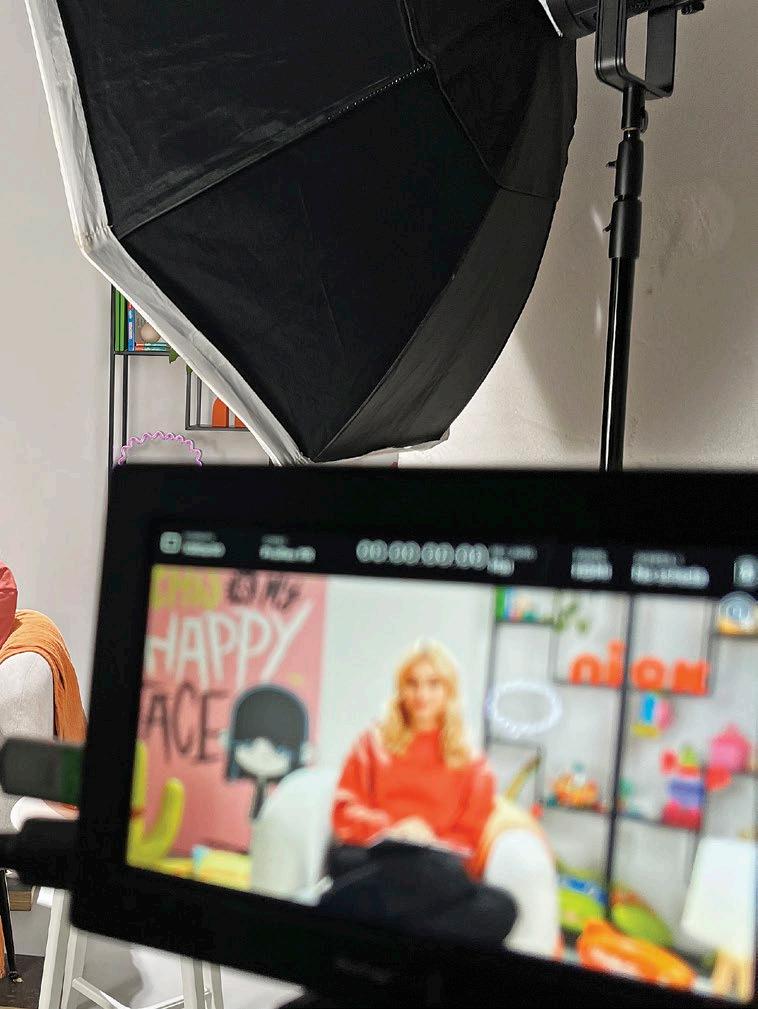
Social, radio and TV. What are the differences?
“Certainly there is a generational difference. On social media it is difficult to find a manager who is over 30 years old, whereas on radio and TV you deal with older people. The same applies to the audience. This means that the language you use must also take this diversity into account. On the radio, I used to play a game where I would come up with words and phrases of youth slang and ask who knew what they meant. I remember that a video had gone viral with a guy saying ‘But who lost a sandal’ and it had become a catchphrase among us young people but obviously people who hadn’t seen the video didn’t say anything. Another thing that makes me smile on the radio, is that the people who intervene usually always say their name and place of residence, like I’m Cristina from Milan, while on social media no one introduces themselves when they intervene.”
Problems with followers?
“No, fortunately I don’t have haters who target me. I think it also depends on the fact that I talk about the things I do and I don’t deal with political or divisive topics, I don’t deal with gossip.”
37 23 02

Did becoming an influencer involve sacrifices? Do you have regrets?
“No, I love doing so many things. Apart from the last year with the radio that saw me engaged in work 5 days out of 7, I have always found time for travel, my great passion, and for riding, my other great passion. However, this summer, with the trips, I recovered well.”
Shooting a video for social media does not take just two minutes...
“Yesterday I made a video for Instagram and it took me 5 hours. Because there is the idea, the shooting, the editing, the postproduction. Even if the final result returns spontaneity, it does not mean that it has not been produced accurately, employing the right time.”
You hosted a radio show called Destination Zeta, what is Generation Z to you?
“We are a generation united by the desire to have fun, not to take things too seriously, to be able to turn everything into a meme. But we are also the generation that can have revolutionary moments, that is
not willing to be teased, that wants respect, that is not satisfied, that wants consistency from most adult people. It is not true that we do not want to work, we do not want to be exploited!”
Any plans for the future?
“I’d like to make a podcast. We’ll see, I have so many ideas, but then you have to have time to make them.”
The contagious smile of Virginia with which we greet us suggests that for her this will not be a problem, however, sooner or later, she achieves her goals. She will do it with the carefree attitude and the desire to have fun with her peers, and with the same ambition to get the right recognition.
We are a generation united by the desire to have fun.
38
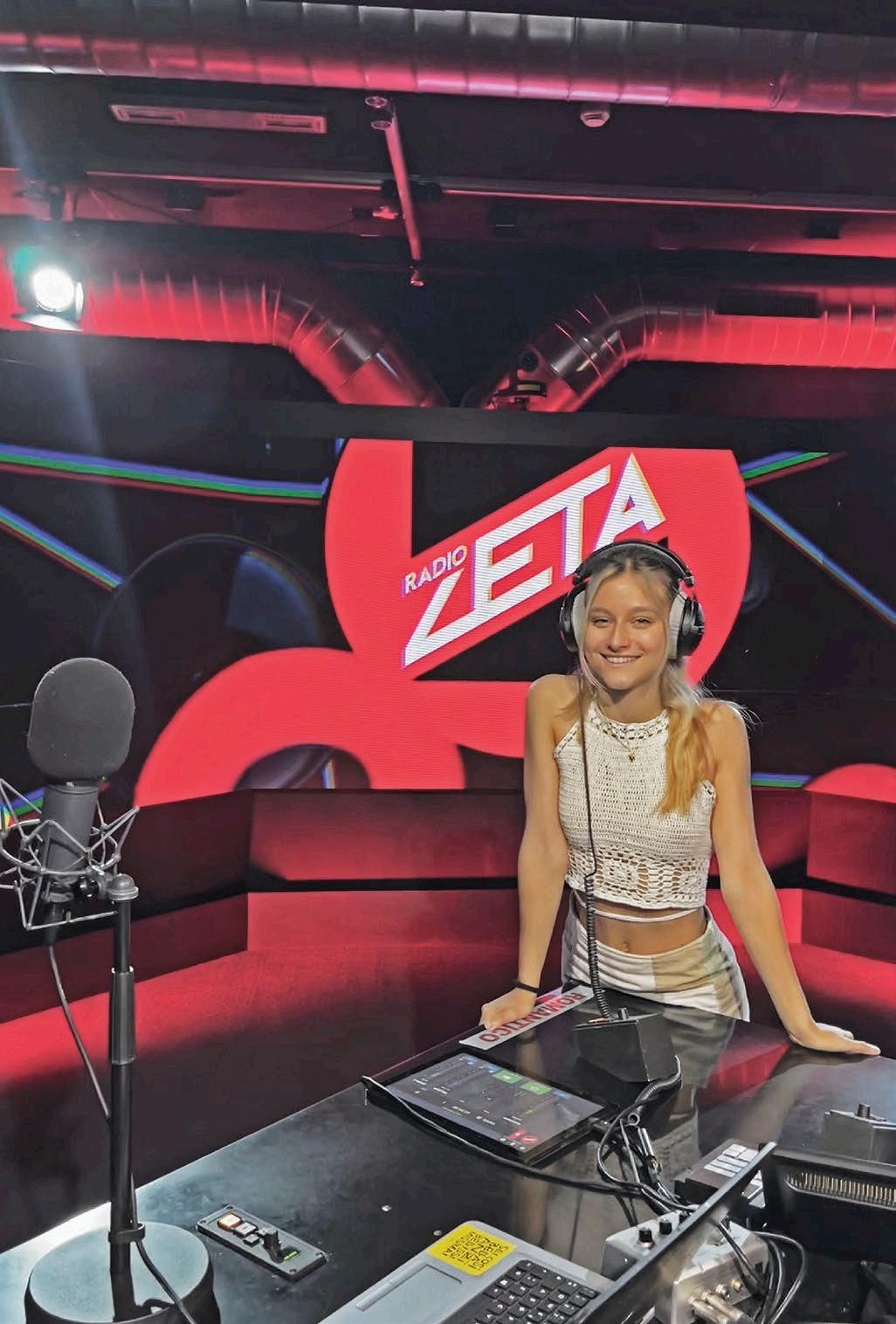
23 02
Why read this article?
To experience the charm of horse racing in the snow, to discover how thousands of people can be accommodated on a frozen lake.
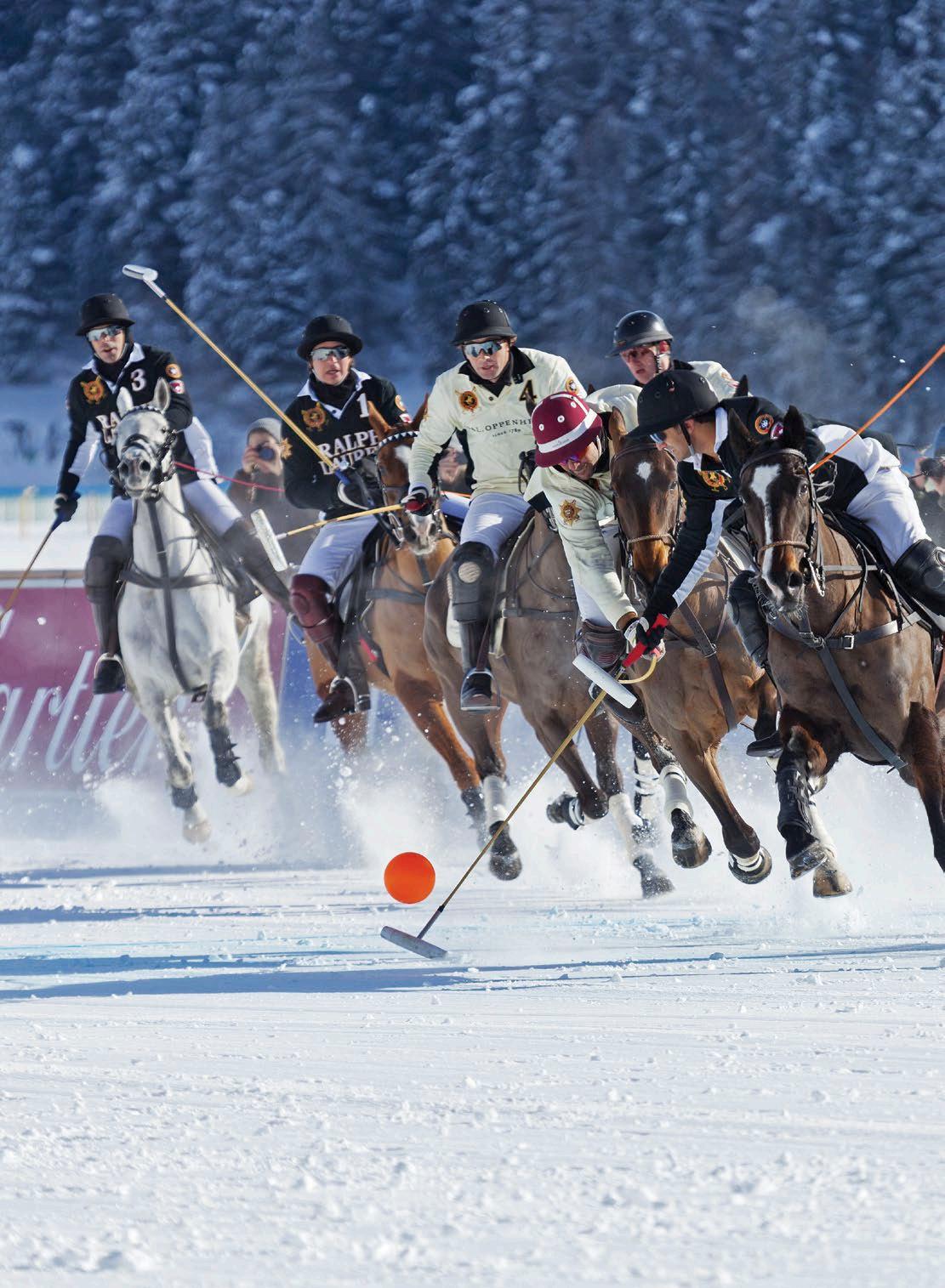
#StMoritz #SnowPolo #snow #icedlake
40

RIDING ON THE FROZEN LAKE
How is it possible to transform an alpine lake into a challenge track with horses and vintage cars as protagonists? Obviously, it depends on Mother Nature and as a rule temperatures and precipitation, but these alone is not enough. If she does her duty and the ice sheet is thick enough, then human technology comes into play. Machines to beat the snow and make it compact, lightweight marquees, catering services that do not stop even when the mercury column falls below zero degrees.
It is a machine that must work perfectly, because the time available is short and the weather conditions can change continuously. Nevertheless, every year See-Infra AG continues to ensure the installation of facilities for some of the most unique and traditional winter events in the Engadin. We are in St. Moritz and to explain the work behind the scenes we interviewed Markus Berweger, CEO of See-Infra AG.
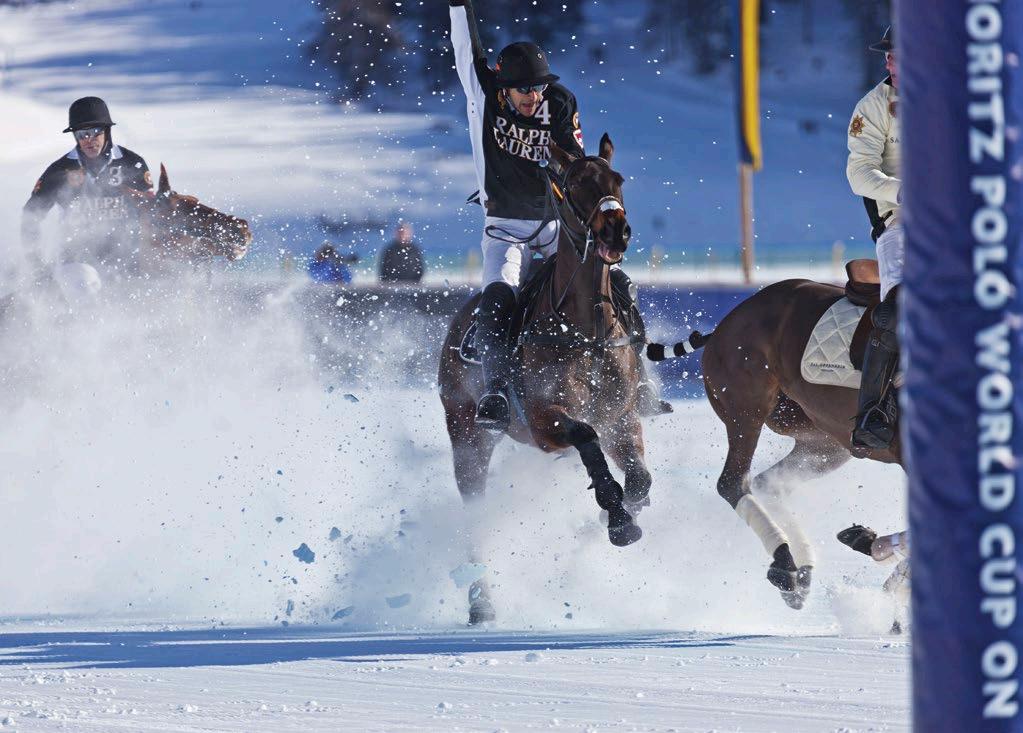
The ice sheet that covers the lake must be at least 27 centimetres thick.
What are the events at which you offer your logistics and equipment assembly service?
“The first event is usually held in late January (in 2024 the 39th edition will be held from 26th to 28th January).
It is the Snowpolo World Cup, a polo world cup in the snow! Next, is the White Turf, which runs for three Sundays in February (in 2024 the 117th edition will be on the 4th, 11th and 18th February). On this occasion, world-famous jockeys lead their thoroughbreds in a race on the frozen lake. The last event is an event born in 2019 called The I.C.E. which is held on the last weekend of February and is an elegant competition for classic cars that perform on the frozen lake.”
What conditions must there be in order for events to take place?
“The ice sheet that covers the lake must be at least 27 centimetres thick. That’s why at the beginning of winter, as soon as the lake freezes, we start the measurements. Then the Municipality of St. Moritz authorizes us. It takes three weeks to assemble all the structures.”
How long have you been running these events?
“I am the CEO of the company, which is a municipal owned by the Municipality of St. Moritz, for eight years.”
A demanding experience?
“I am in charge of a group of about ten people. Basically, I spend the winter looking at the weather forecast, because if it snows you have to go to beat the slopes. If temperatures exceed 0 decrees Celcius the ice thins. It’s very demanding, not least because I also have my job as a civil engineer in the Pini group, I manage the branch in St. Moritz. We are a team of 28 and after a past in Afry, since August 2022 we have entered Pini.”
Is climate change influencing?
“If there is a rise in average temperatures in winter, ice formation is more difficult. For example, at the beginning of this year the 27cm layer was only in the middle of the lake. Therefore, the machines could not pass to bring the material for the assembly of infrastructure, tents and equipment. We did it with
42
helicopters, working in sub-zero cold conditions for long shifts to be able to do it in time. But in the end we did it.”
Are they large structures?
“We use lightweight materials, but still these are tents that can accommodate events and catering for 400-500 people. In addition to those for sponsors, VIPs, kitchens, athletes, horses, staff.”
And if the ice wasn’t thick enough, would you have a plan B?
“For the snow-polo, there is a nearby area on the mainland large enough for the field whereas for white turf the rink is much longer and there are no adequate spaces outside the lake.”
Where are the horses housed?
“There is a modern stable in St. Moritz, then they are taken to a dedicated area on the lake for warming up.”
You were born and raised in St. Moritz, an international name, a place synonymous with charm and luxury. Any critical issues?
“We have too many second homes and those who want to live and work here cannot find accommodation. On the other hand, the legislation build new ones and so many of those who work are frontier workers of Val Chiavenna.”
SNOW-POLO
Snow polo has been around for almost 40 years, ever since hotel entrepreneur Reto Guadenzi organised the first St Moritz Snow Polo World Cup on the frozen lake of the Engadin resort in 1985. The tournament continues to see some of the best polo players in the world engaged. The rules are the same as the traditional polo but an orange ball is used to make it visible on the snow and the horses (called “polo pony”) have reinforcements on the hooves to increase the traction.
WHITE TURF
On the three Sundays of February, the White Turf gathers more than 30,000 people on the frozen lake of St. Moritz.
Passions and hobbies? Do you also ride on ice?
“No, I don’t ride. But for many years I’ve been dedicated my spare time to ice hockey. Now I go to the mountains and enjoy mountain biking.”

To challenge some of the best international jockeys engaged with thoroughbreds in the challenges on the snow of gallop and trot. Skikjöring is a unique specialty: runners can be dragged on skis by a thoroughbred horse without a rider at speeds up to 50 km/h on a path along 2700 m.
THE I.C.E.
The I.C.E. is the acronym for “international competition of elegance” for cars. It is held in late February on the frozen lake of St. Moritz. Dozens of dream cars, belonging to different eras parade on the track in the middle of the frozen lake to win the prizes but above all to be admired by fans.
Markus Berweger
Year of birth: 1968
Profession: Civil Engineer
After studying civil engineering in Rapperswil, he worked for a long time in the Toscano group and then in Afry. Finally, since August 2022 he has been managing the St. Moritz branch of the Pini Group. For 8 years he has been CEO of See-Infra AG, the company of the Municipality of St. Moritz that deals with the infrastructure for events on the frozen lake. He is politically engaged and sits on the Grand Council of the canton of Graubünden.
43 23 02
Apartments
Lumino (TI)



Info:+41918274036 immogal.ch
withorwithoutprivategarden
from2.5-3.5-4.5rooms
Delivery summer 2024
End—
#bulgarianwine #wine
#winetasting #winelover
#winetime #bulgaria #winelovers
#vino #instawine #pilgerreise
#kotkaimishkakapana #winelife
#divinotaste #redwine #melnik
#hiking #bergwandern
#rhodopengebirge #weinprobe
#bulgarianwinery #rhodopen
#bulgarien #bulgarienreise
#rundreise #weinerlebnisreise
#weinerlebnis #weinreisen
#weinreise #wandern
#wineoclock

worldwidewine.ch Visit our online shop, scan the QR-code!



























































